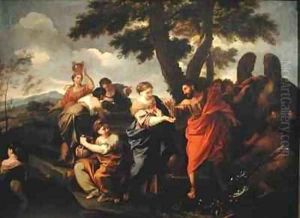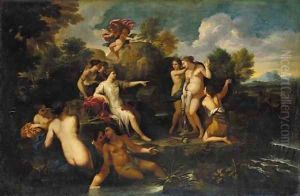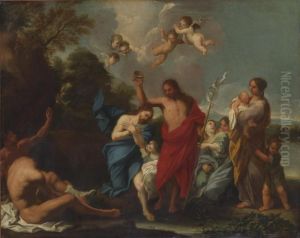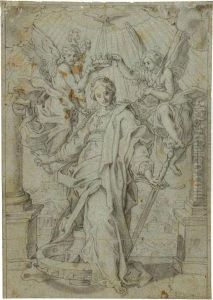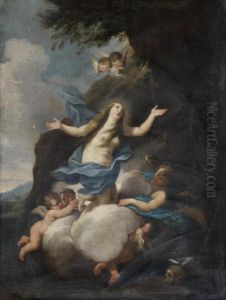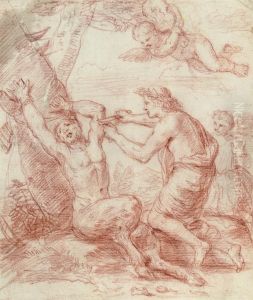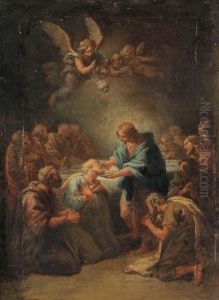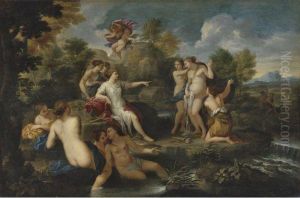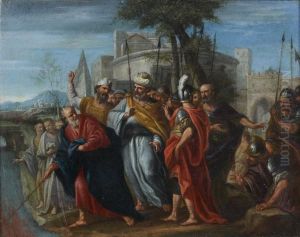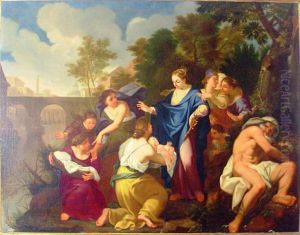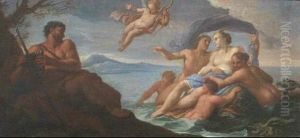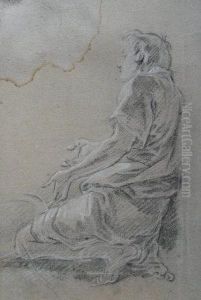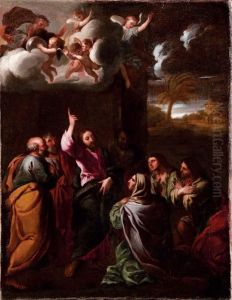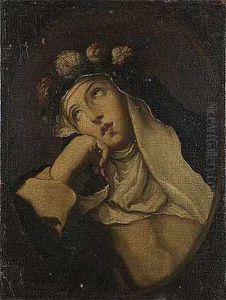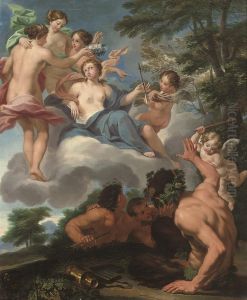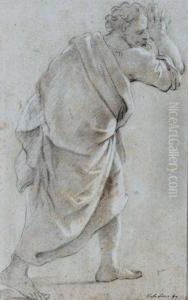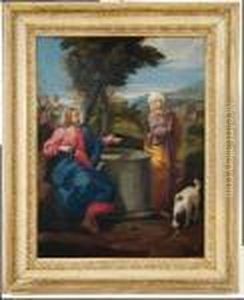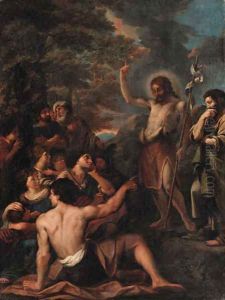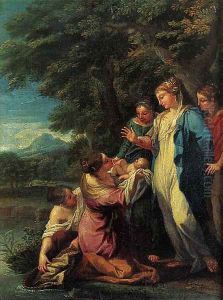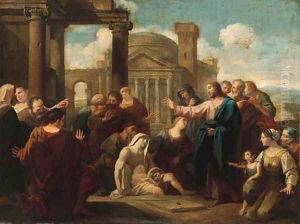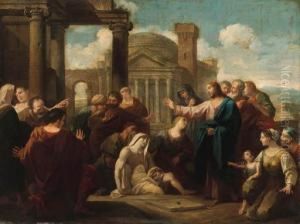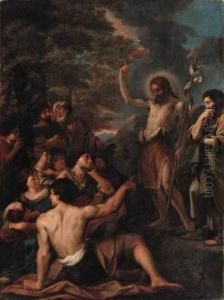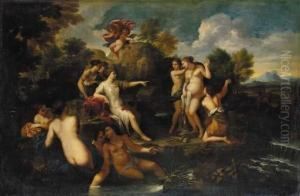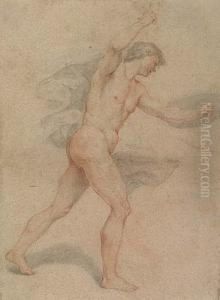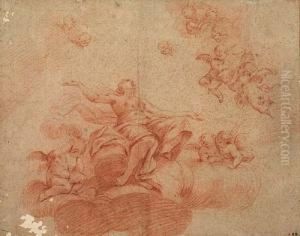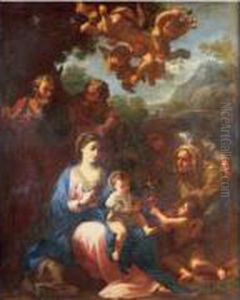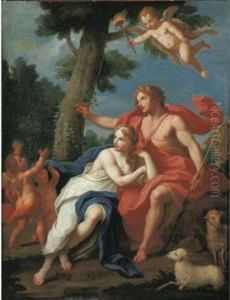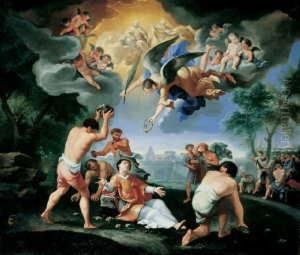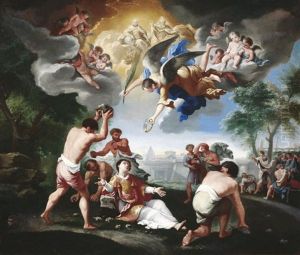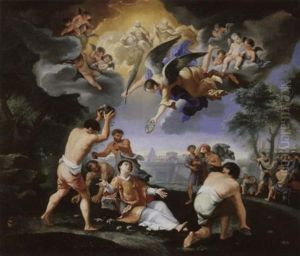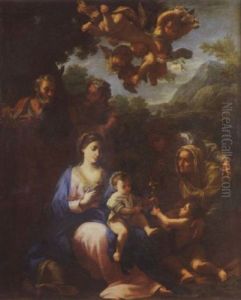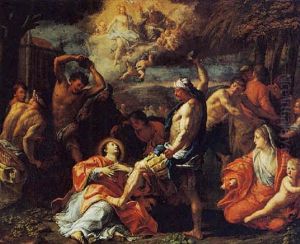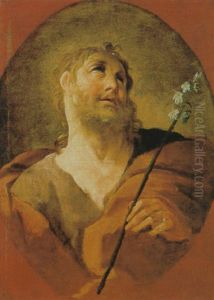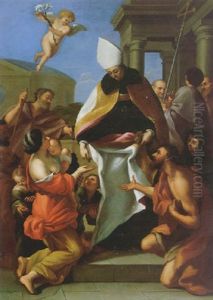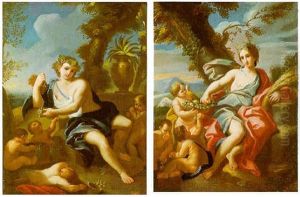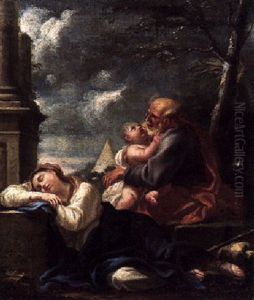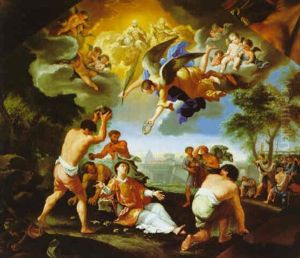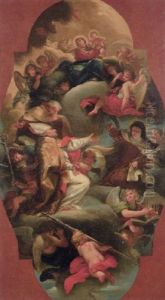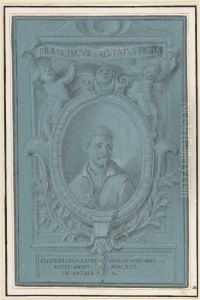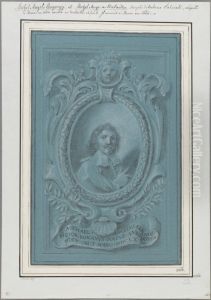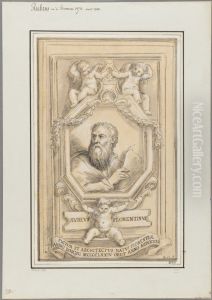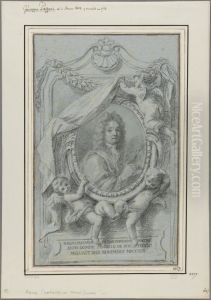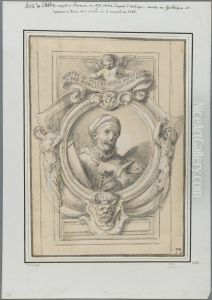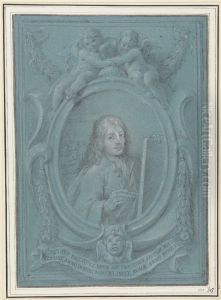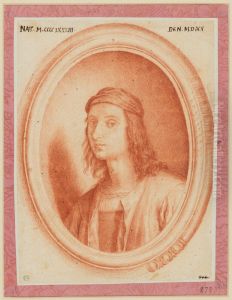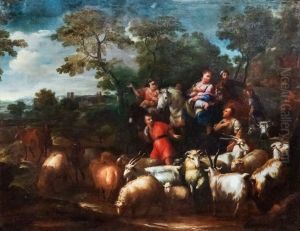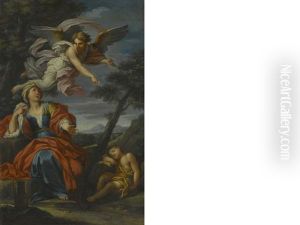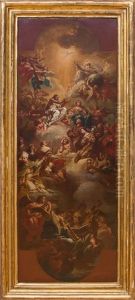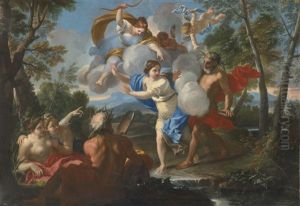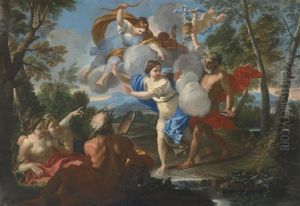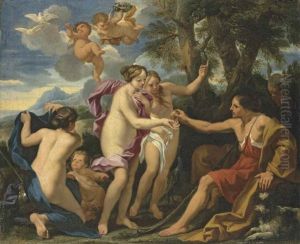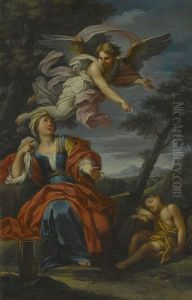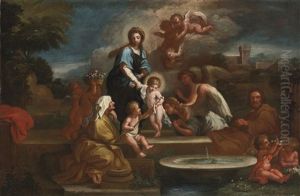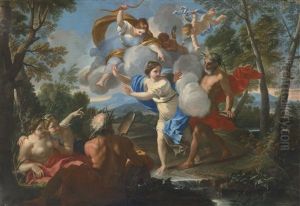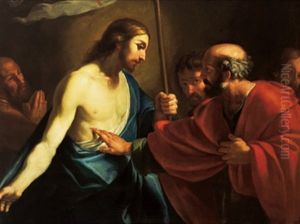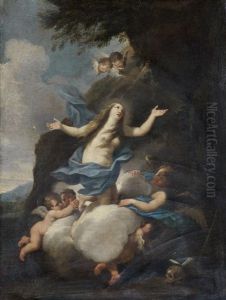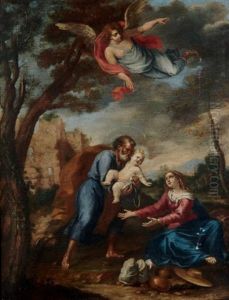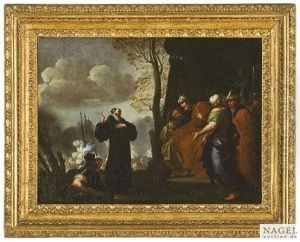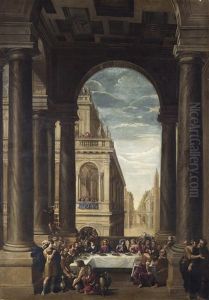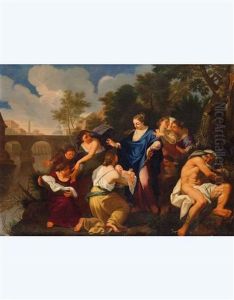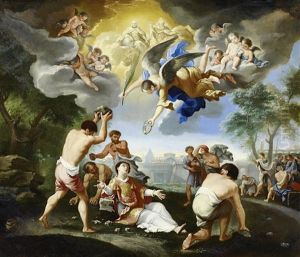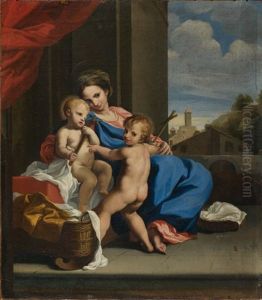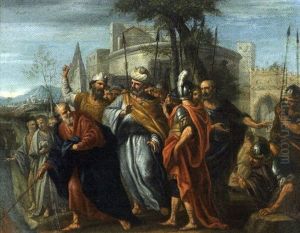Luigi Garzi Paintings
Luigi Garzi was an Italian painter of the Baroque period, born in Pistoia in 1638. He was active during a period in art history when the Baroque style was prevalent, characterized by dramatic expression, rich color, and dynamic movement. Garzi initially received his artistic training in his hometown, but he later moved to Rome, which was then the epicenter of the Italian art world, to further his studies and establish his career.
In Rome, Garzi became a pupil of the prominent painter Pietro da Cortona, who was a leading figure in the Baroque movement. Under da Cortona’s guidance, Garzi honed his skills and was exposed to a variety of important commissions and projects. He developed a style that combined the grandeur and dynamism of his teacher with his own sensibility.
Garzi's oeuvre included religious and mythological scenes, which he painted for various churches and private patrons. His works are known for their elegance, clarity of composition, and the delicate treatment of figures, which often reflect an influence of the classical tradition. Furthermore, he was adept at fresco painting, a skill that led to significant commissions decorating the interiors of churches and palaces.
One of his most notable works is the ceiling fresco in the church of San Pantaleo in Rome, which showcases his mastery of the medium and his ability to create a sense of heavenly transcendence. Garzi was also involved in the decoration of the Palazzo Lancellotti and the Church of Santa Maria in Via Lata, among others.
Throughout his career, Garzi was recognized for his talent and became a respected member of the Accademia di San Luca, an association of artists in Rome that played a crucial role in the city’s artistic life. He served as the Principe (director) of the academy, reflecting his esteemed position within the Roman art community.
Luigi Garzi continued to paint until his death in 1721. Although he may not be as widely known as some of his contemporaries, his contribution to the Baroque period has been appreciated by art historians and connoisseurs, and his works can still be seen in various locations in Italy.
